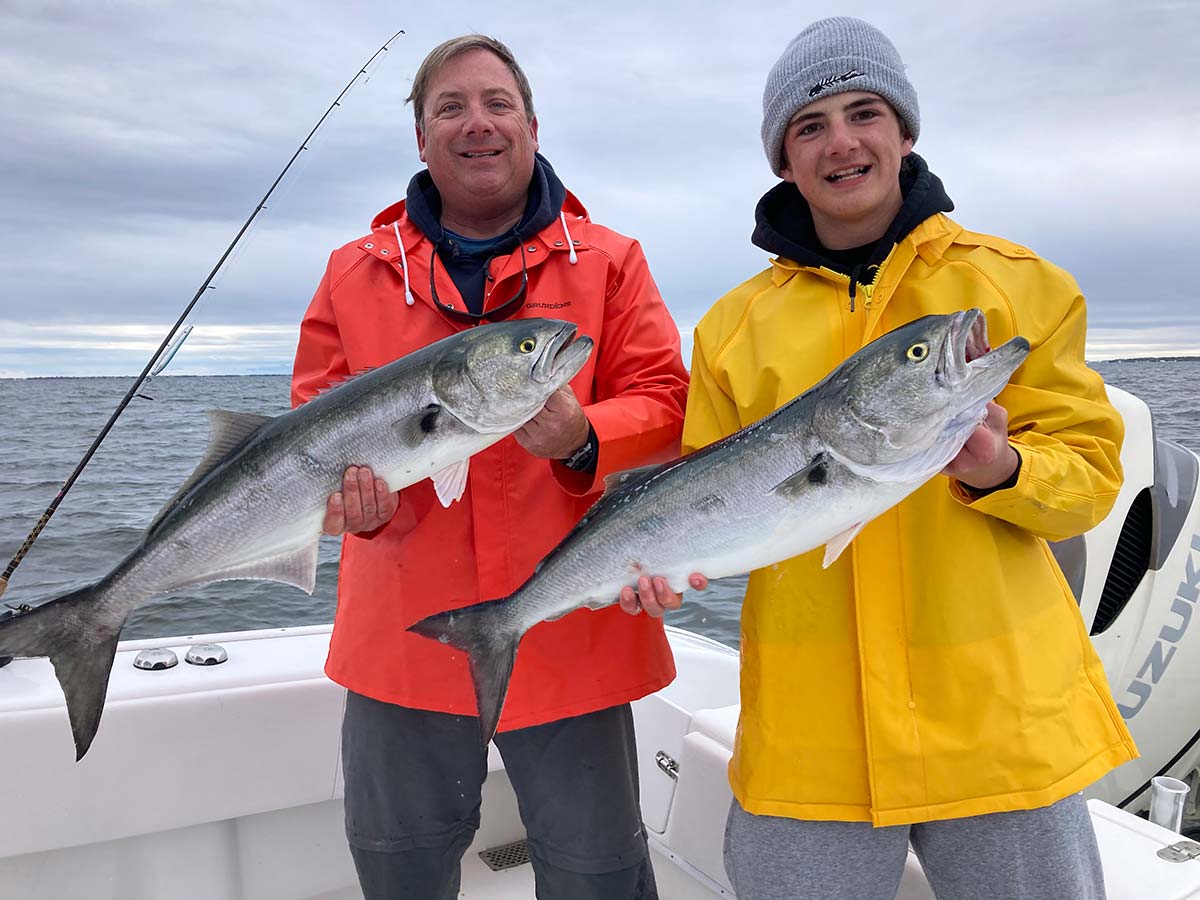
Fishing the Great South Bay in May can pay large dividends.
Anybody can catch bluefish or striped bass under birds in the ocean in the fall. However, finding bass and bluefish on the “inside” during the spring is a totally different ballgame. In my neck of the woods (Great South Bay) most of the fish you find feeding under birds in the bay during the spring are small bass. No doubt fun to catch, but I don’t know any fisherman that leaves the dock looking for something small to catch. Don’t get me wrong, I’m always happy to bend a rod, but if there is something bigger around, that’s what I’m out looking for. So let’s head into the bay and look for some big springtime bass and blues.
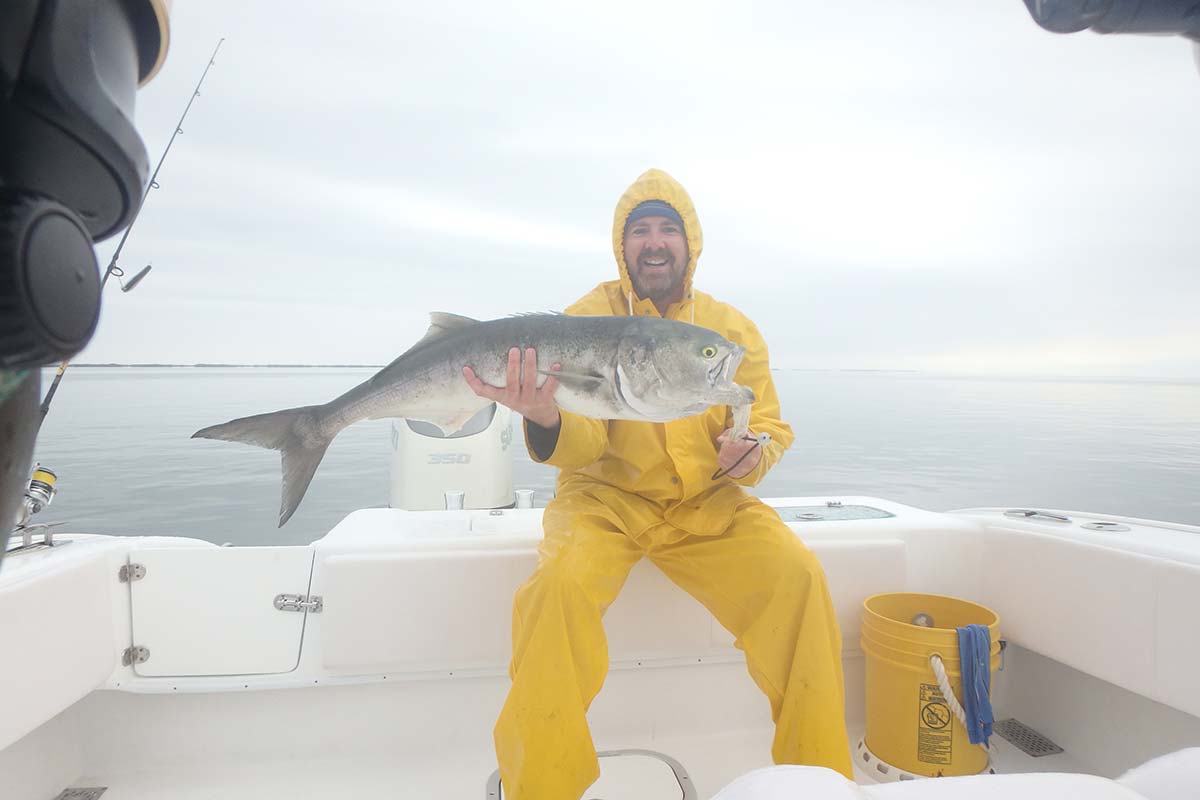
Rip It Good
It took me a few years to realize how many fish could be found among the various rips inside the bay. Not every rip will hold fish, so it’s important that you remain patient. Once you find a rip that is holding fish you need to test the waters to find out which species are below. It may surprise you but I fish a rip very differently based on which fish are in that rip. Very rarely will I encounter both striped bass and bluefish around the same rip.
Let’s discuss striped bass first. When I find bass I have two go-to lures. I will throw a metal lip swimmer like a Danny plug. I will position the boat down current of the rip. This means I’m throwing my lure up current. Bass will usually “sit” right behind the rip facing into the tide conserving energy and waiting for prey to come over the top. It’s important that your retrieve speed keeps pace with the current. When it comes to bass, and most other species, you want your lure to look as natural as possible. Some of the rips that I fish will range from 10- to 20-feet deep. When I’m marking bass and they are staying deep I will throw a 6-inch Tsunami pearl colored swim shad. Once again, I will cast it up current. However, I will allow it to sink for a few seconds before I begin my retrieve. Whatever lure you are casting, once it gets down current of you it’s time to reel in and re-cast. When fishing a rip with artificial lures I never anchor. I like the mobility of working the entire rip—my favorite rip is about the length of a football field.
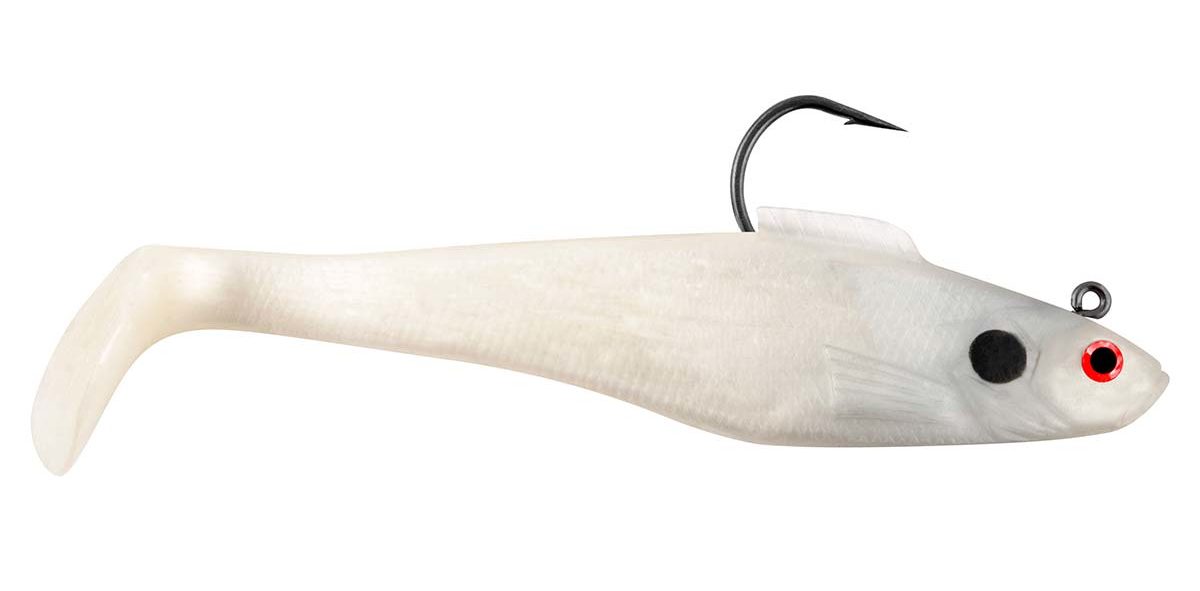
Fishing for bluefish along a rip is a lot different than fishing for bass. I mentioned right above that you need to make your lure look natural when fishing for stripers and most other fish. No need to do so when it comes to bluefish. When I find them on a rip, it usually means they are feeding. Don’t bother throwing any soft plastics unless you are willing to waste a lot of time and money. Once again I have two go-to lures. I will throw a pencil popper with a single J-hook on the tail 95 percent of the time. Keeping the boat in the same position (down current) as I do with bass, I will cast as far as I can up current. Bluefish are more likely to come up on the shallow side of the rip. Once my popper hits the water I never stop reeling. Work that popper fanatically with the tip of your rod. You want to make “noise” and get their attention. When I get tired of working the pencil popper I will switch over to a Yo-Zuri long cast Hydro Minnow. I use the heavy version which is 6 ¾ inches and weighs 1 ¾ ounces. I like that it swims under the surface a bit and only dips down 2 to 3 feet. You don’t want a lure that bounces around on the bottom. Once again I remove the trebles and fish it with a single J-hook off the rear of the lure. When it comes to bluefish I don’t want anything to do with treble hooks. Both of these lures are very aerodynamic which will allow for long casts.
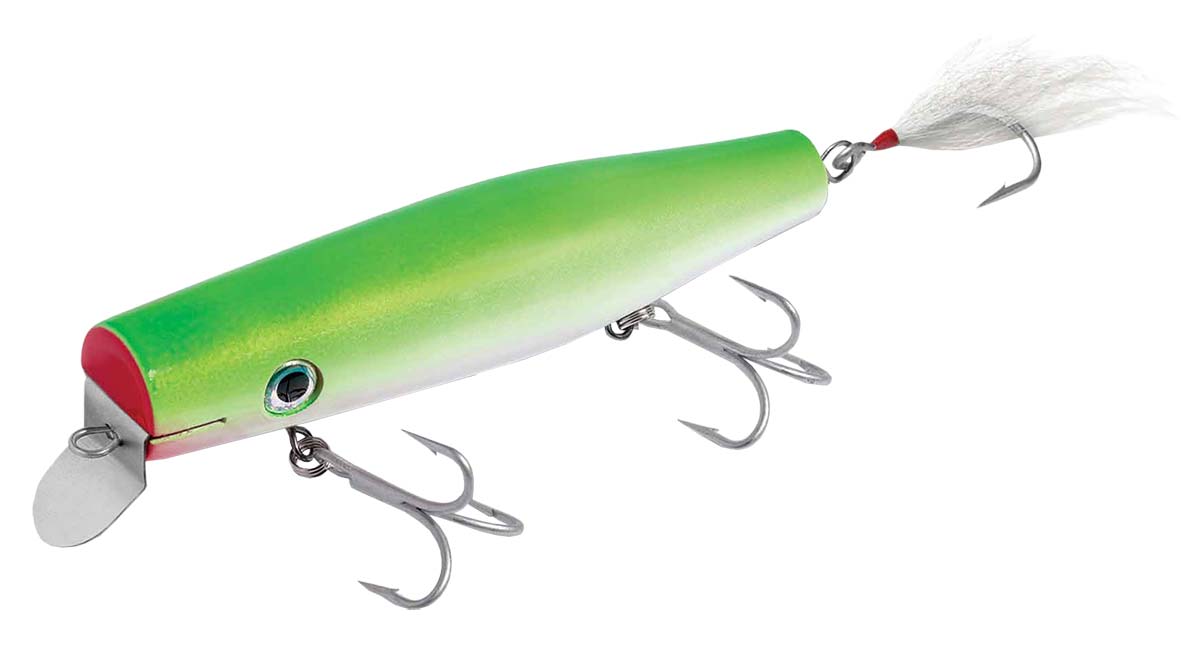
In The Middle Of The Bay
There are times when bass and bluefish will be in the bay feeding on bunker pods. I can’t tell you how many times I have come across this scenario and have not been able to catch any on artificial lures. These fish are so focused on the real stuff that no matter what you throw you won’t get them to bite. That means it’s time to fish dirty. By dirty I mean live bait. You can still snag bunker on treble hooks you just can’t leave the snagged bunker swimming in the pod. So that means you need to reel the bunker in and send it back out with an inline circle hook. That rule only applies to striped bass. However, I have no interest in taking a bluefish home so I want to make sure I’m releasing the bluefish in the best condition that I can also—I don’t want to use a treble hook that might get swallowed. Plus weighted treble hooks, nowadays, aren’t cheap. You can fish the bunker either live or cut into chunks. Fishing the live ones will definitely get you way more bites. If bass are present I’m hooking the bunker through the nostrils. Remember that bass swallow bunker headfirst. If you hook your bunker through the tail, when you go to set the hook you are going to end up just pulling the bunker out of its mouth without the circle hook doing its thing. I hook my live bunker behind the dorsal fin if most of the fish on the pods are bluefish. I’m not saying that a bluefish will never eat a bunker head but I just know based on experience they would rather eat the body and not the head. If you are using chunks, use the heads for the bass and the rest for the bluefish.
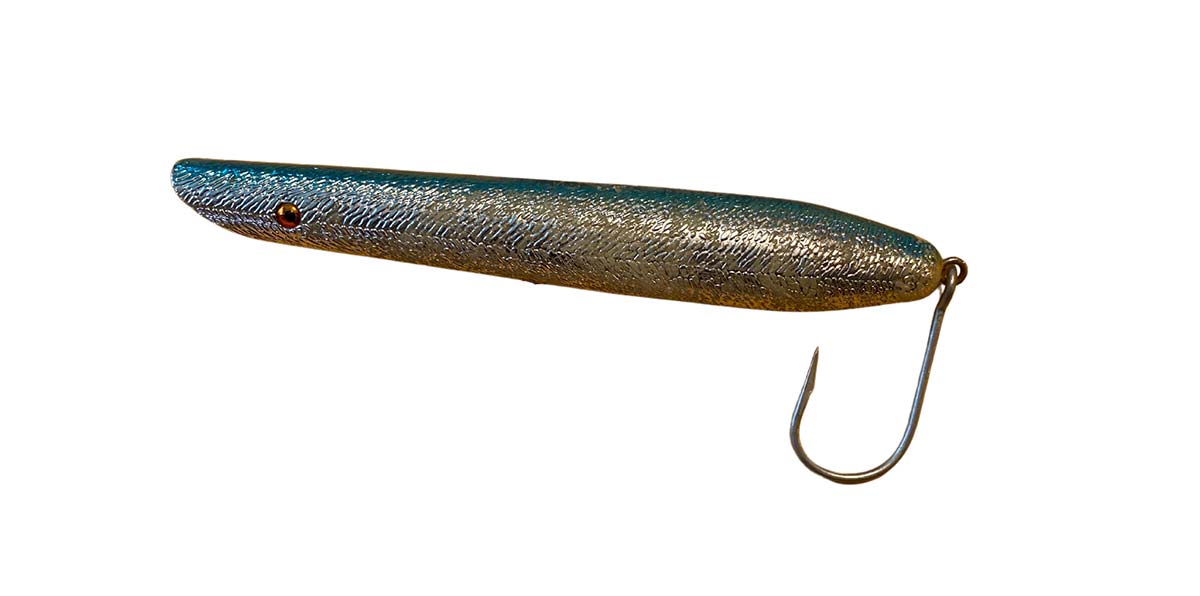
Two Is plenty
I’m sure you have heard of the saying “don’t bring a knife to a gun fight.” This phrase definitely applies to chasing bass and bluefish within the bay. I do enjoy going light to a certain extent when possible though. The largest bluefish that I have caught in the bay weighed in at 17 pounds while my biggest bay bass was just shy of 40 pounds. Big bass and bluefish will exhaust you if you go too light. To cover all bases I always push off the dock with a multitude of setups. I’m part of the new generation (despite being 48 years old) that loves using spinning reels for just about everything. Most of the time I’m using a 5000-size reel when I know bigger fish are around. When it comes to picking out which rods to use, lures and fishing methods must be taken into consideration. I will keep it real simple and just list two rods that will handle everything in the bay when targeting bass and bluefish.
Shimano designed their Teramar Northeast spinning rods series to handle a wide range of fishing options. I use the TMSE70MH (mod fast action, lure weight 1/2-2 ounces, medium-heavy power) for throwing big plugs like metal lip swimmers, mag poppers and bottle neck poppers. This rod is also great for live-lining and chunking. If I want to go a little lighter I will use the TMSE70M (fast action, lure weight 1/2-1 ½ ounces, medium power). This rod is great for throwing pencil poppers, walk the dog type lures, swim shads, jerkbaits and even bucktails. Going much lighter will quickly wear you out. You have been warned when the cows and gators come to town!
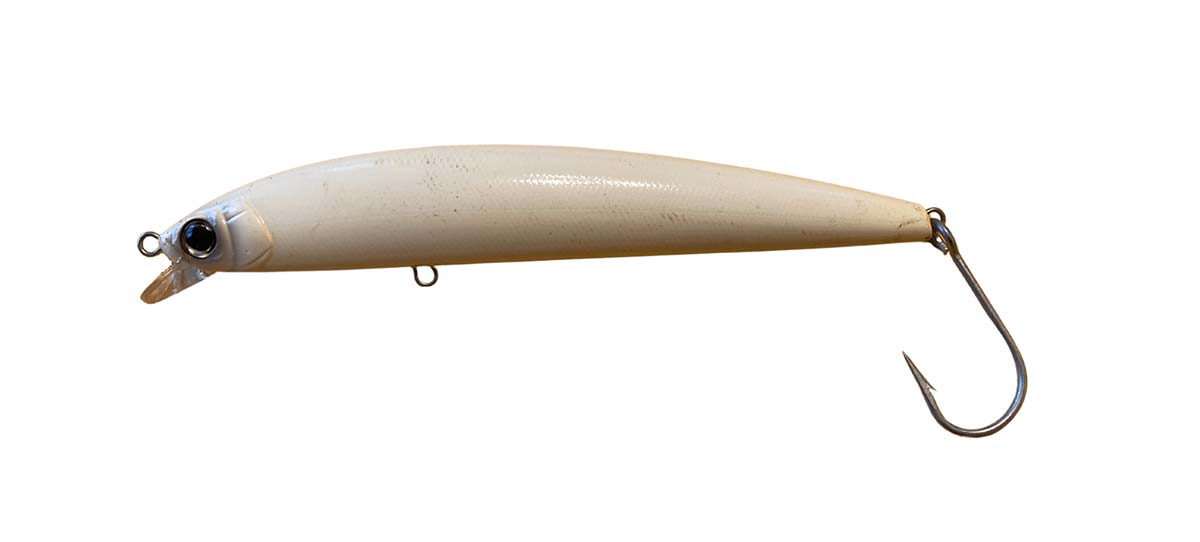
Parting Words
Before I end this article I want to quickly talk about tides. When it comes to fishing the rips I do much better on the outgoing tide. When I have the incoming I will usually drive around looking for bass and blues on the bunker pods or I will get up into the flats hoping to find a few fish roaming around. Being a one trick pony will limit the amount of fish you catch. Just remember when you push off the dock you need a plan B and sometimes a plan C during the season. Think outside the box and when trying these methods out, always adapt them slightly to your comfort zone for the most enjoyable experience.




